In this guide, we will dig into the world of clematis, exploring their sunlight needs, the best conditions for growth, how to care for them, and much more.
The Sunlight Needs of Clematis

Now, let’s address the crux of the question: can clematis grow in full sun? The short answer is yes, but with some qualifications. While many clematis species thrive in full sunlight, there are key considerations to ensure their health and longevity.
Ideal Conditions for Growth
Clematis generally prefers a location where it can receive at least 6 hours of sunlight a day. However, not all varieties react the same to full sun exposure. Certain species are more tolerant of sun and heat, while others may struggle without proper care.
Factors that Affect Sunlight Needs:
Variety: As mentioned earlier, some varieties do better in partial shade, especially during the hottest parts of the day. For example, clematis varieties like ‘Nelly Moser’ and ‘Jackmanii’ can handle full sun, but provide better results when given some afternoon shade.
Climate: In cooler climates, full sun is beneficial since it encourages more robust growth and flowering. In contrast, in hotter regions, full sun can lead to wilting or sunburn on the leaves. In these areas, a spot with morning sun and afternoon shade might be ideal.
Soil Quality: Well-draining, nutrient-rich soil supports healthier growth for clematis in sunny locations. If your soil is less than ideal, sun exposure can exacerbate stress on the plant.
Benefits of Growing Clematis in Full Sun
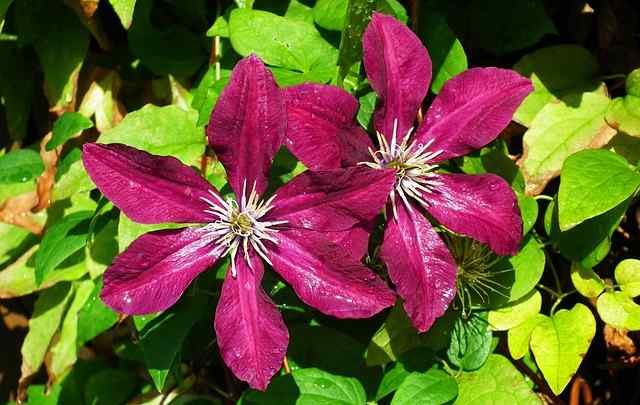
Enhanced Blooms: Many clematis varieties produce larger and more vibrant blooms when they bask in full sunlight. Flowers tend to have richer colors, and growth is generally more vigorous.
Strong Vigor: Full sun promotes strong stems and healthy leaves, allowing clematis to climb confidently and fill out trellises or structures beautifully.
Pest Resistance: When plants receive adequate sunlight, they often develop a more robust immune response. This can reduce the odds of pest infestations, which can flourish in shaded areas.
Choosing the Right Varieties for Full Sun
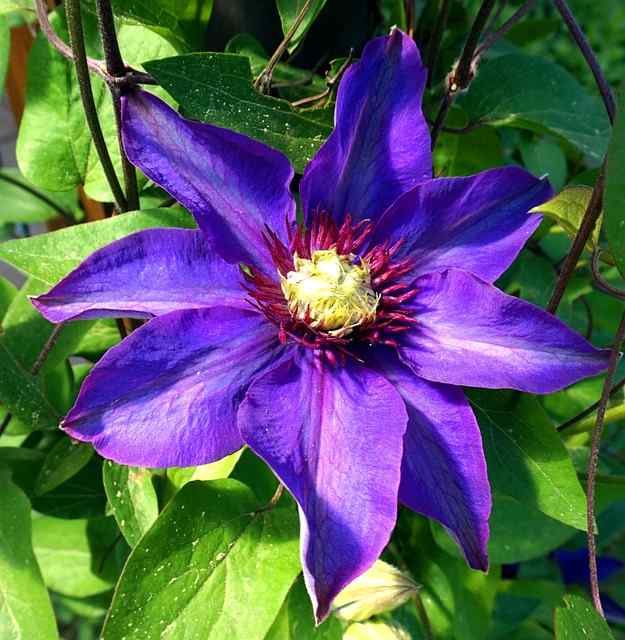
When selecting clematis for full sun conditions, choosing varieties that thrive in such environments is vital. Here are some exemplary choices:
Clematis ‘Jackmanii’: This popular variety produces rich purple flowers that bloom profusely from summer through fall. It thrives in sunny spots and can reach heights of up to 10-12 feet.
Clematis ‘Betty Corning’: Known for its lavender-blue flowers and delightful fragrance, this variety not only loves the sun but also offers lovely cascading blooms.
Clematis ‘The President’: With large, deep purple blooms that can measure up to 7 inches across, this variety flourishes in sunny positions and blooms in June with a repeat later in the summer.
Clematis ‘Mrs. N. Thomson’: This variety features delicate white flowers and thrives in full sun, making it a beautiful choice for bright spots in the garden.
Preparing the Soil for Sun-Loving Clematis

Soil preparation plays a crucial role in the successful growth of clematis in sun-drenched environments. Here are some steps to ensure your soil is optimal:
Soil Testing
Consider conducting a soil test to evaluate pH levels and nutrient content. Clematis prefers a slightly acidic to neutral pH (6.0 to 7.0). If your soil is too alkaline or acidic, you may need to amend it accordingly.
Amendments
To improve drainage and fertility, incorporate well-rotted compost or organic matter into the soil. Working in aged manure can add essential nutrients while also improving soil structure.
Mulching
Applying a 2-3 inch layer of mulch around the base of the clematis will help retain moisture and regulate soil temperature. This is especially crucial in full sun where soil can heat up quickly.
Care and Maintenance of Sun-Grown Clematis
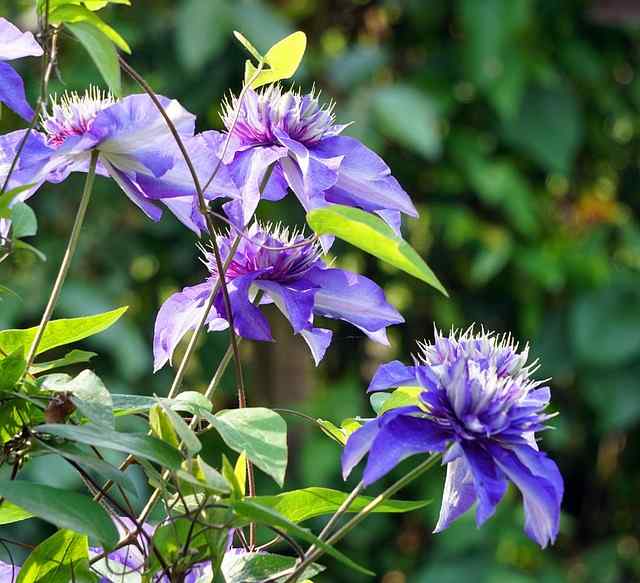
Once you’ve established your clematis in a sunlit location, ongoing care is vital to keep the plant healthy and flourishing.
Watering
Clematis prefers consistently moist soil, but it’s crucial to avoid waterlogging. Water the plant deeply, ensuring it receives about an inch of water weekly, especially during dry spells.
Fertilizing
Regular feeding can boost blooms and overall health. A balanced, slow-release fertilizer applied during the growing season provides the necessary nutrients. Alternatively, a monthly application of a fertilizer high in phosphorus can encourage flowering.
Pruning
Pruning methods will depend on the clematis group:
Group 1: Prune right after flowering to maintain shape.
Group 2: Lightly prune after the first bloom, and encourage additional growth.
Group 3: Cut back to about 12 inches in early spring, promoting new growth and blooms.
Problems and Solutions for Sun-Exposed Clematis
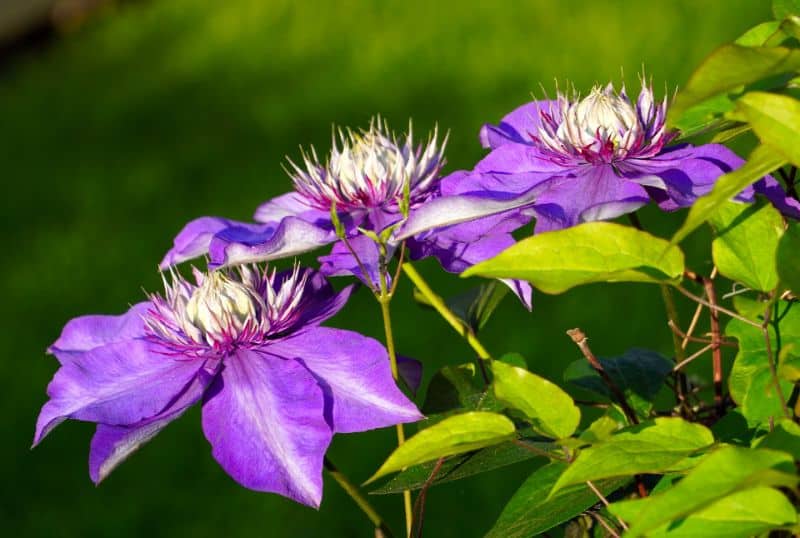
Despite diligent care, growing clematis in full sun can lead to certain challenges. Knowing how to address these issues enhances your gardening experience.
Wilting
If your clematis wilts during the hottest part of the day, assess the watering regimen. Increasing early morning or late evening watering can help combat wilting and maintain moisture levels.
Leaf Scorch
In extreme heat or dry conditions, leaves may become scorched. Providing some afternoon shade with nearby taller plants or a garden structure can alleviate this issue.
Pests and Diseases
While sun-loving clematis varieties are generally more resistant to pests, they can still be affected. Regularly check for signs of aphids, spider mites, or fungal diseases. Healthy plants are less likely to suffer from infestations, so keep on top of nutrition and moisture levels.
Clematis Companion Plants for Full Sun Gardens
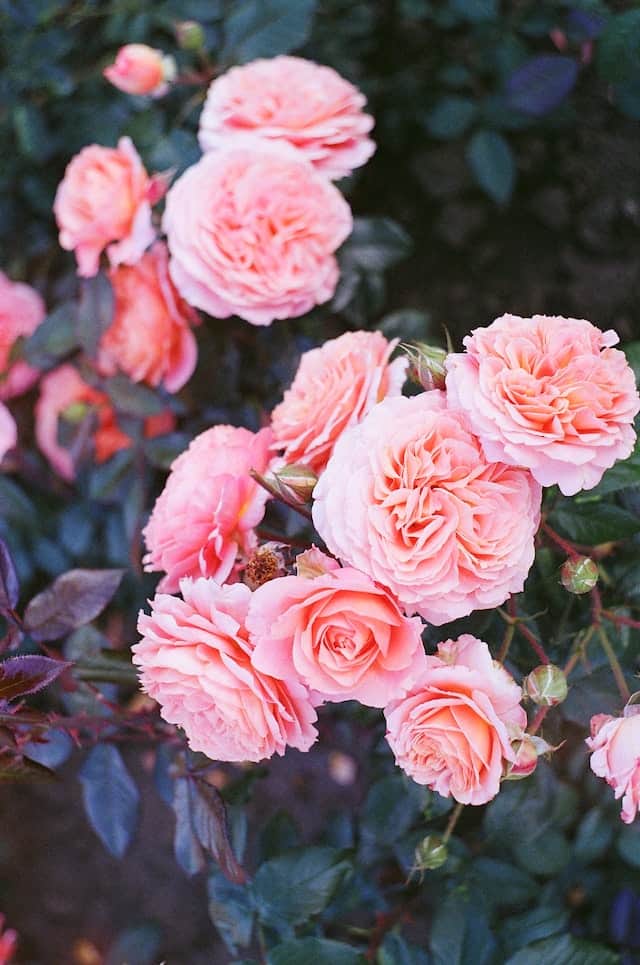
Planting clematis alongside compatible companion plants can enhance the garden’s aesthetic appeal and improve overall health. Here are some excellent choices:
Roses: Many clematis varieties complement the colors and growth habits of roses wonderfully. Their climbing nature allows clematis to trail along the roses, creating a stunning layered effect.
Daylilies: The bright colors of daylilies provide a perfect backdrop for clematis blooms. Both thrive in full sun, and their growth patterns can establish a lush planting area.
Lavender: The fragrance and color of lavender alongside clematis create a beautiful sensory experience, and both appreciate sunny locations with well-draining soil.
Salvia: With their tall, vertical habit and bright blooms, salvias provide great contrast and support for climbing clematis.
Conclusion: Creating a Vibrant Full Sun Garden with Clematis
In conclusion, can clematis grow in full sun? Absolutely! With careful selection of the right varieties and proper care, you can enjoy breathtaking clematis blooms in sunny spots throughout your garden.





